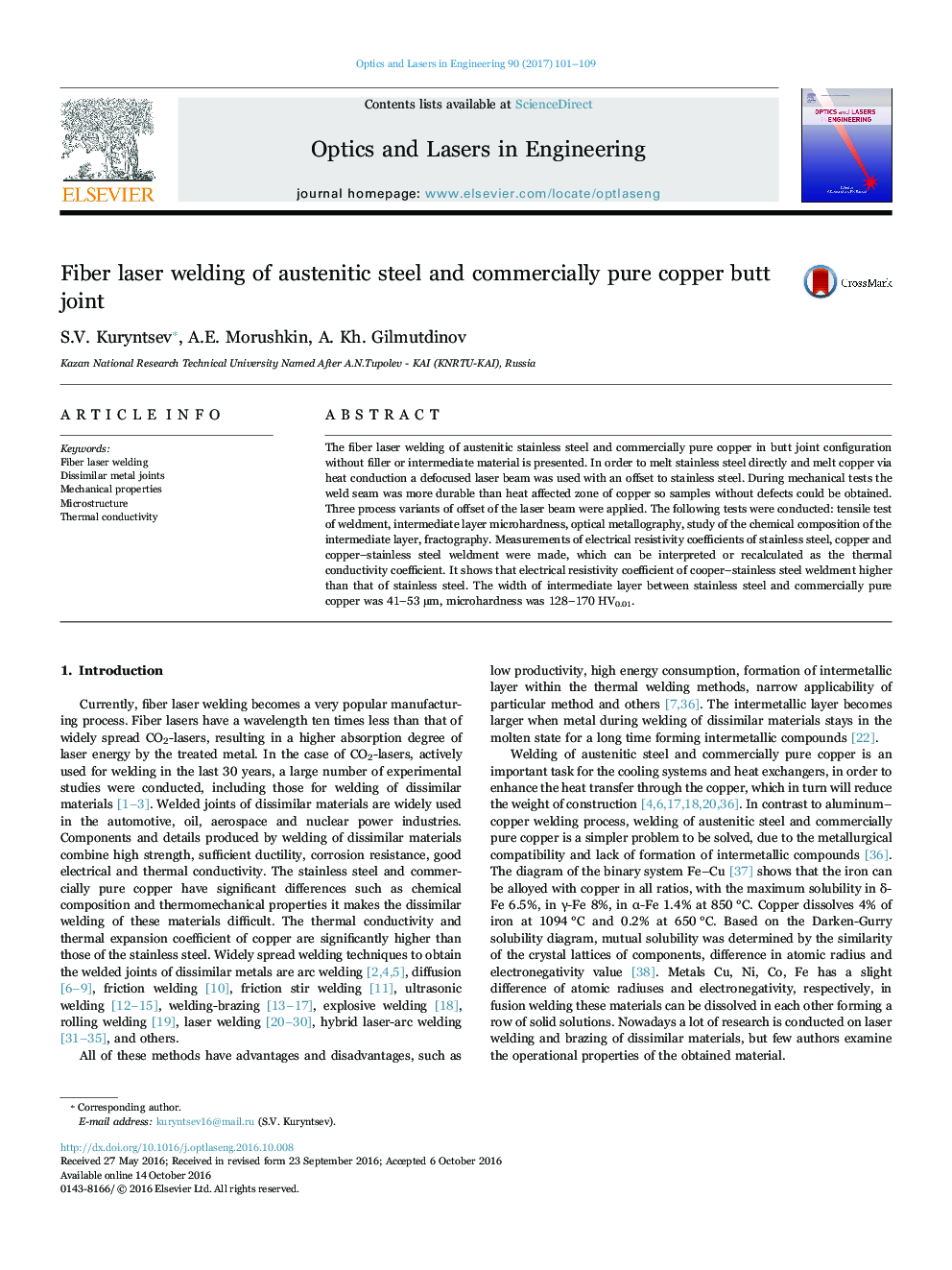| Article ID | Journal | Published Year | Pages | File Type |
|---|---|---|---|---|
| 5007907 | Optics and Lasers in Engineering | 2017 | 9 Pages |
â¢Fiber laser welding of austenitic steel and pure copper with 3 mm thickness.â¢Three techniques of producing welded joints were investigated.â¢The fusion of copper was achieved via heat conduction.â¢Tensile strength of the weld is larger than that of the copper HAZ.â¢Electrical conductivity of the welded joint was investigated.
The fiber laser welding of austenitic stainless steel and commercially pure copper in butt joint configuration without filler or intermediate material is presented. In order to melt stainless steel directly and melt copper via heat conduction a defocused laser beam was used with an offset to stainless steel. During mechanical tests the weld seam was more durable than heat affected zone of copper so samples without defects could be obtained. Three process variants of offset of the laser beam were applied. The following tests were conducted: tensile test of weldment, intermediate layer microhardness, optical metallography, study of the chemical composition of the intermediate layer, fractography. Measurements of electrical resistivity coefficients of stainless steel, copper and copper-stainless steel weldment were made, which can be interpreted or recalculated as the thermal conductivity coefficient. It shows that electrical resistivity coefficient of cooper-stainless steel weldment higher than that of stainless steel. The width of intermediate layer between stainless steel and commercially pure copper was 41-53 µm, microhardness was 128-170 HV0.01.
